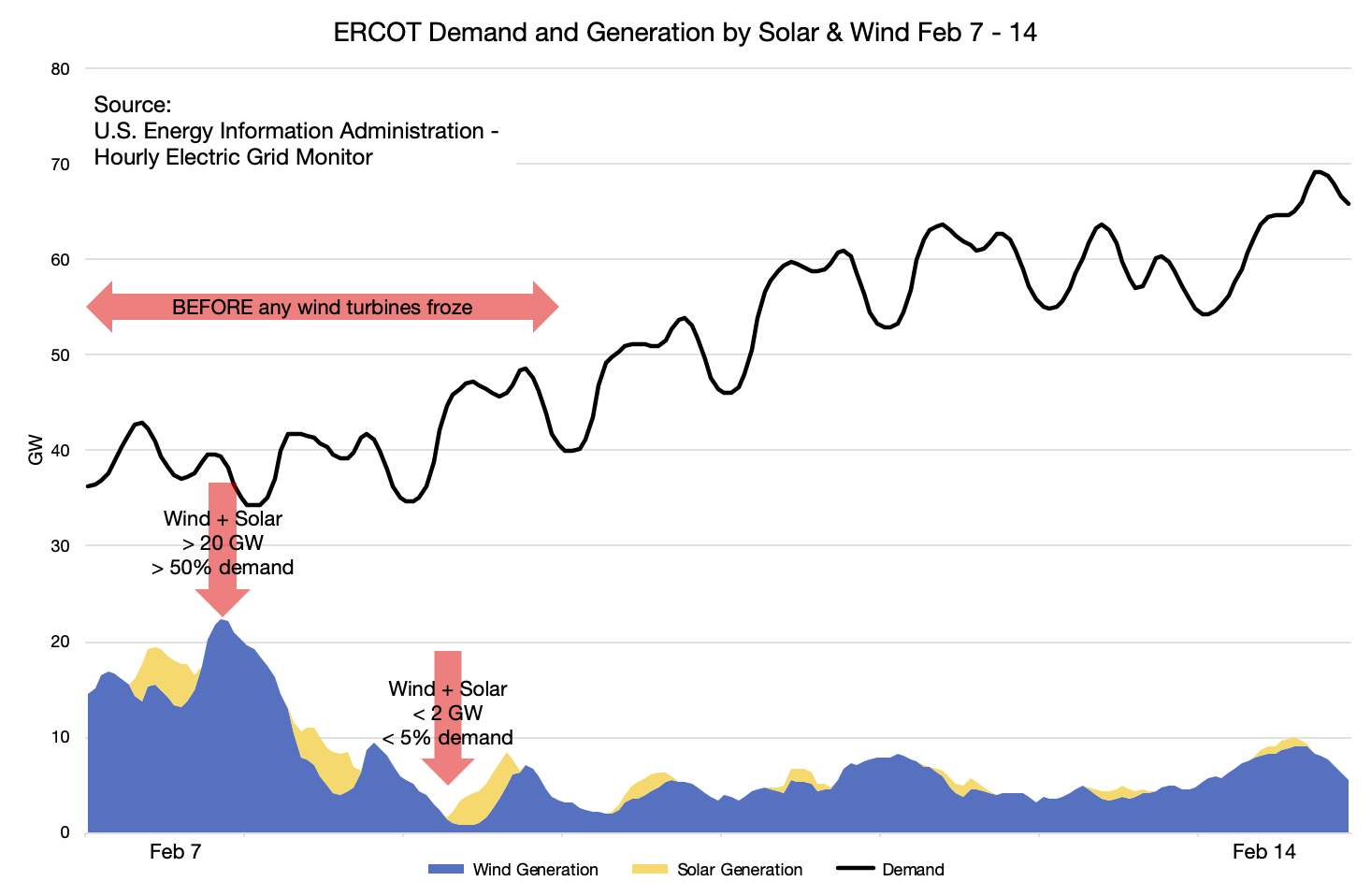Quick Summary
The disastrous TX blackouts should teach us that we need power plants that are 1) reliable and 2) resilient. Reliable means: they can produce as much power as we need, when we need it. Resilient means: they can keep producing power even under adverse conditions.
One key to resilience is "on-site fuel storage"--keeping a large amount of fuel at a power plant so that it can produce power even during a supply disruption. The champions at on-site fuel storage are coal and nuclear, which can cheaply keep months of fuel on hand.
Natural gas is not usually as resilient as coal and nuclear, because natural gas is expensive to store in large quantities. Most natural gas power depends on "just in time" delivery from pipelines. If pipeline transport is disrupted, many natural gas plants will go down.
Another key to resilience is weatherization--ensuring that plants can handle a wide variety of weather conditions, even unusual ones. For example, the weatherized coal and gas infrastructure in Alberta, Canada was able to handle far colder temps than TX had during its blackouts.1
Resilience requires reliability. A wind turbine can't be resilient. Even if, at great cost, it is winterized to withstand low temps, you can't count on it in any weather conditions, let alone extreme ones. And you can't count on solar for most of any day, extreme weather or not.
In fact, wind and solar are particularly bad for extreme weather. Wind works worst when temps are extremely cold or extremely hot. Solar totally fails during any kind of storm, and even for hot days is largely useless because it fades in late afternoon--when AC is needed most.2
Wind/solar are not only non-resilient themselves, their rapid fluctuations create resiliency challenges for reliable power plants. Example: gas plants in TX had to rapidly ramp down to accommodate high wind before the TX freeze and then rapidly ramp up to compensate for low wind.

Wind/solar also cause huge resiliency problems by defunding resiliency. In CA, power-line maintenance funding was cut to pay for solar. In TX, money that could have been used to weatherize plants was used for wind turbines that provided almost no power when it was needed most.3

The TX blackouts should spark a national conversation about resilient power. Instead, we are shutting down more and more coal and nuclear plants, while mandating more resilience-destroying wind/solar. Tell your elected officials: support resilience or I won't support you.4
References
- Alex Epstein - Energy Talking Points on Texas Electricity Crisis↩
- Alex Epstein - Energy Talking Points on California Blackouts↩
- Alex Epstein - Energy Talking Points on Texas Electricity Crisis
Alex Epstein - Energy Talking Points on California Blackouts↩ - U.S. Energy Information Administration - Electric Power Monthly (Nov 2020)↩
